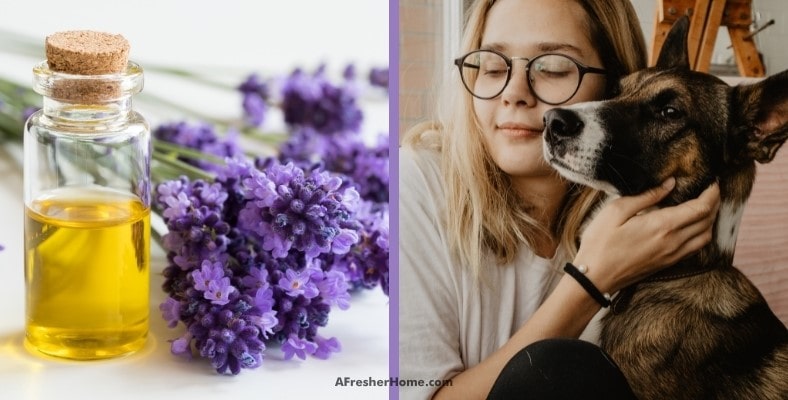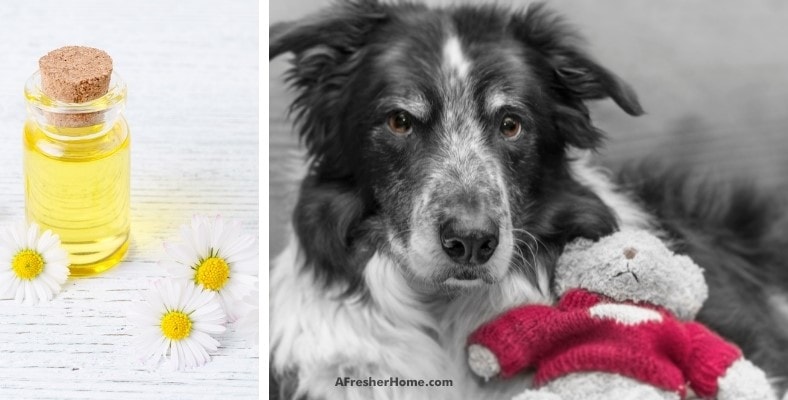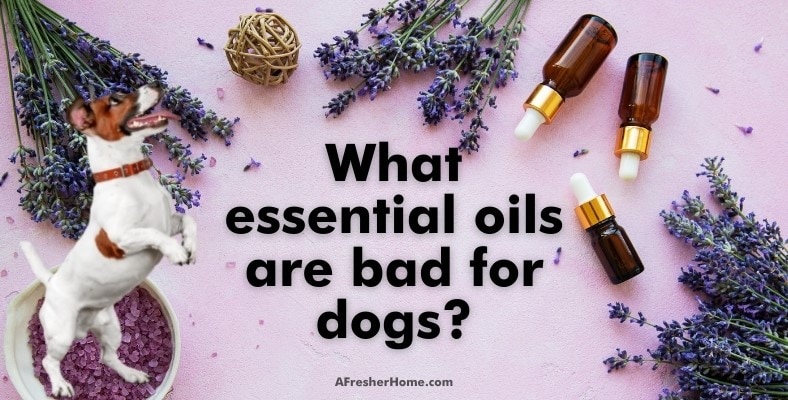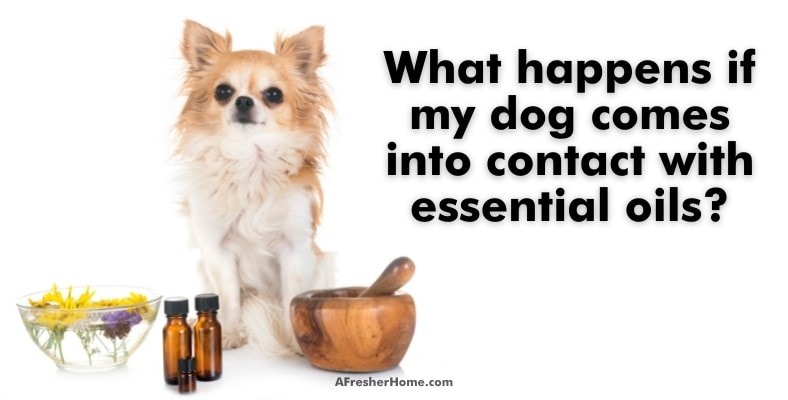Essential oils are great for improving both the mood and air around you – but are they safe to use around pets and your dog?
Read on to learn what you need to know!
Contents
Can I use a diffuser around my dog?
The answer to that question is not a simple yes or know – it depends. A dog’s sense of smell is incredibly superior to that of a human, so what’s a gentle scent for us can easily be overwhelming for them.
To put it into context, humans have around 6 million scent receptors in their noses compared to 300 million in dogs. As well as this, the area of a dog’s brain that is responsible for processing smells is 40 times larger than a human’s.
This means that if you are going to use oil diffusers around your dog you should ensure the room is adequately ventilated. In that case it should be fine for it to be around your dog.
I recommend keeping your dog out of the room while it is on to minimize any impact, although for safe scented oils it shouldn’t be an issue.
Additional dog and diffuser things to consider
If your dog has a history of breathing problems it is probably best to avoid oil diffusers altogether.
When the oils are diffused, tiny droplets enter the air and are inhaled into the lungs. This can cause respiratory and liver problems in your dog over time.
If you’re going to use a diffuser, it should be placed somewhere high where your dog can’t accidentally knock it over.
Is lavender safe to diffuse around dogs?
Yes, lavender is safe to diffuse around dogs. It can help to reduce their levels of anxiety and car sickness.
You can also apply lavender essential oil to your dog’s fur. I always recommend seeking advice from a veterinarian before doing this.
If your dog seems particularly anxious, you can rub a little oil into the fur on its ear. Gently massage it in and watch them sink into a state of tranquility.
If you wish to apply essential oils topically you should NEVER apply them in the undiluted state. Even oils that are safe for dogs can make them ill if applied in their natural state.
You should use a carrier oil to apply them topically. These are neutrally scented oils such as coconut, avocado, sunflower, aloe vera, and sweet almond oil.
Using lavender oil the right way
A good ratio to work off is 1 drop of essential oil for each 1 ½ tablespoons of carrier oil. This will create a safely diluted oil for use on your dog. I recommend applying a bit in a test patch. Place a dime-sized quantity on their fur and watch them for 15 minutes.
If they’re going to experience an adverse reaction it is likely to happen in this timeframe.
If you wish to diffuse lavender oil to help your dog, you should only run the diffuser for 10 minutes. After this time, switch off the diffuser and allow the air to clear for around half an hour.
Is chamomile oil toxic to dogs?
No, chamomile oil is not toxic to dogs. It’s safe to use in your diffuser and should not cause adverse reactions in your dog. However, you should still follow the instructions above and don’t trap your dog in a room with the diffuser on.
Chamomile oil has been shown to have a calming effect on dogs just like it does on humans. It’s also good to use if your dog is experiencing any skin irritation, allergic reactions, or has burnt itself.
If your dog has gastrointestinal discomfort or unease, chamomile oil can also be useful. It has also been shown to have beneficial effects on the socialization skills of shy dogs, too!
What essential oils are bad for dogs?
Unfortunately, many essential oils are very toxic to dogs. They include:
- pennyroyal
- pine oil
- tea tree
- wintergreen
- cinnamon, citrus
- peppermint
- sweet birch
- ylang-ylang
Other dangerous oils are anise, birch, bitter almond, boldo, calamus, camphor, cassia, chenopodium, and cloves.
Garlic, goosefoot, horseradish, hyssop, juniper, mugwort, mustard, and oregano are also toxic.
Thyme, rue, Santolina, sassafras, savory, tansy, terebinth, thuja, wormwood, and yarrow should also be avoided.
Other essential oil scents and types to avoid for dogs
Citrus scents can cause your dog to become very lethargic, vomit, and maybe even experience seizures. Pine is a stomach and skin irritant for dogs.
In mild cases, this can cause vomiting or diarrhea. In more severe cases, they can suffer from liver or central nervous system damage.
Tea tree oils can cause skin irritation, vomiting, depression, and paralysis of the rear legs. Ylang-ylang can make your dog struggle to breathe.
It can weaken their body and cause them to vomit too.
What happens if my dog comes into contact with essential oils?
In their concentrated state, essential oils can be very dangerous for your dog. If they walk through a puddle of oil or get it on their fur it can lead to serious health consequences.
If they ingest any of the oils, the consequences can be more severe.
If the oils get onto your dog’s fur there is a high chance that they will try to lick it off. Ingestion of these oils is very dangerous and can lead to toxicity.
Some common symptoms of essential oil toxicity include:
- Watery eyes and nose
- Redness and swelling of the gums, skin, and lips.
- Excessive drooling or vomit
Their body temperature and heart rate are likely to drop and you may notice them becoming unsteady on their feet.
What to do if your dog is exposed to harmful essential oils
If they begin to exhibit tremors, are suddenly lethargic, and struggle to breathe these are all worrying signs. If your dog begins to pant excessively, cough, wheeze, or display any of the other symptoms, contact a veterinarian immediately.
You are may need to call poison control if your dog ingests any essential oils. They will ask you the type of essential oil, the amount that your pet has come into contact with, the breed and weight of your dog, and how long ago the exposure happened.
I would always recommend taking your dog to the veterinarian for a health checkup if you suspect they have come into contact with essential oils.
As soon as you suspect your dog has ingested essential oils give them some fresh air. I also recommend taking them outside for the best results.
You may be tempted to try and induce vomiting through the ingestion of activated charcoal. Don’t! In reality, it increases the risk of harm to your dog.
This can cause essential oils to stick to the walls of their lungs which can cause lung inflammation or an obstructed airway.
What should I do if my dog gets oil on its fur or skin?
If your dog has contact with essential oil on its fur or skin you should immediately wash it off using hand soap and warm water.
As you take your dog to the vet be sure to bring the essential oil in a sealed bag with you. This will help the vet to establish the severity of the situation and determine an appropriate course of treatment.





